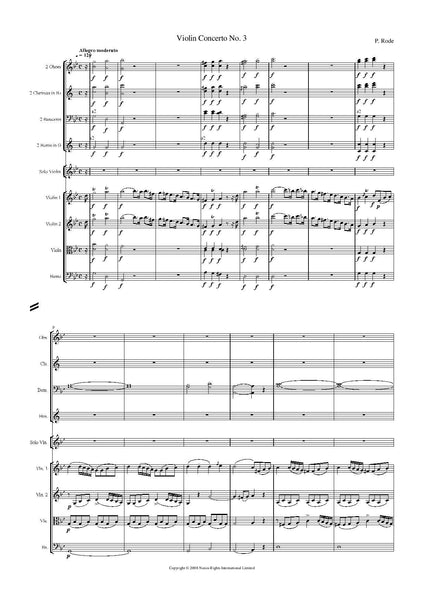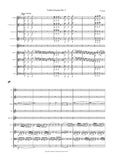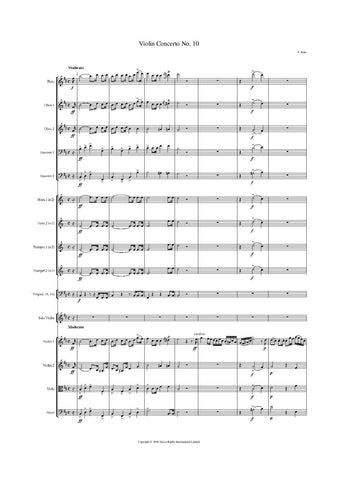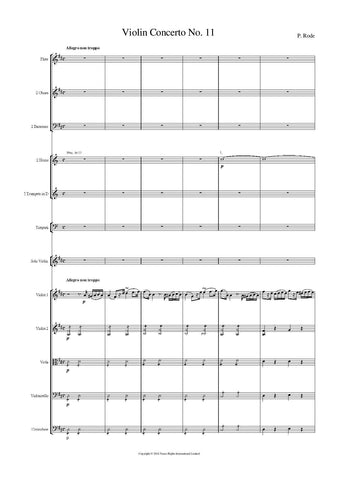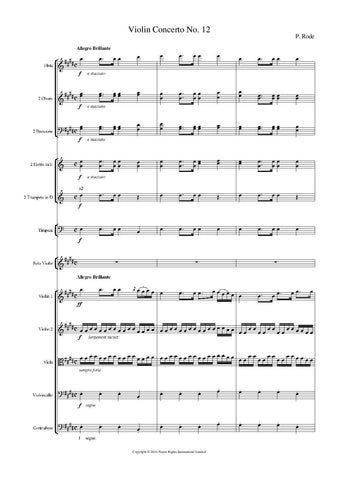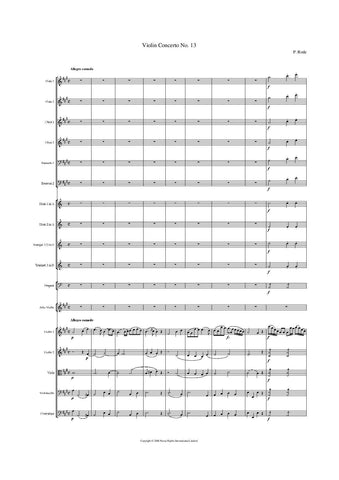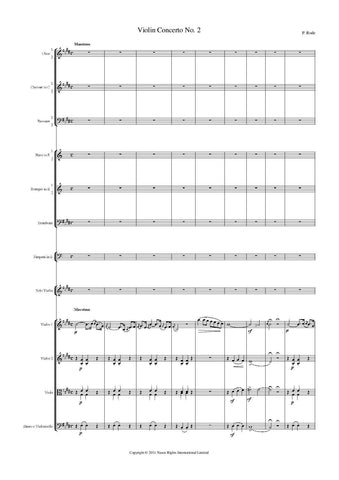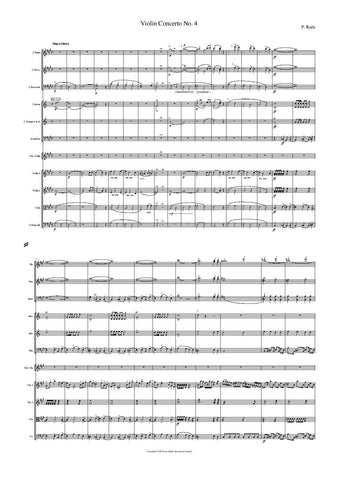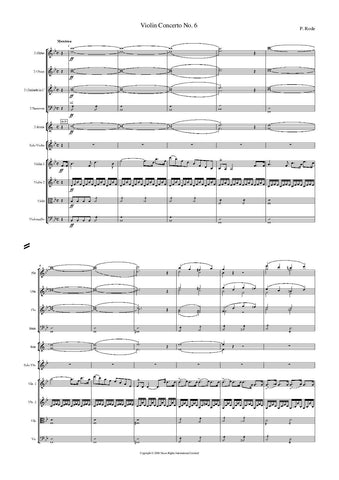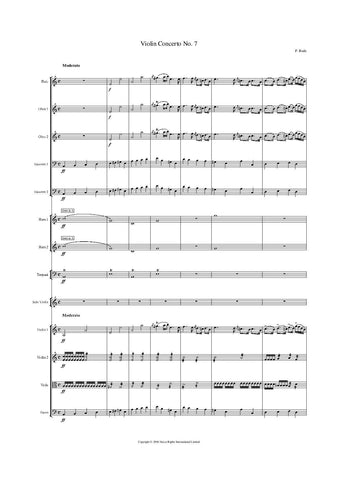Details
|
Pierre Rode's thirteen concertos date from 1794 or 1795, when he was about twenty. The Violin Concerto No. 3 in G minor, written about 1798, shows the grandiose side of his art to full effect. The first movement, Allegro moderato, is one of the longest that Rode ever wrote—nearly fifteen minutes' playing time. The movement begins with forte half notes (minims) in the orchestra, continued by a dotted rhythm. Eventually the clarinets sound a gentler note; the dotted rhythm returns and the soloist enters after about 100 measures of tutti. As is often the case in Rode's concertos, the soloist's first entry is a dramatic flourish, consisting mostly of dramatic half notes (minims) followed by sixteenths (semiquavers). The flourish is repeated, though the continuation uses triplets that resolve into a more lyrical passage lower in the violin's register. This theme is repeated two octaves higher before a scampering of sixteenth notes (semiquavers) leads to the true lyric heart of the movement, a sweetly-sung theme repeated in several registers. This theme is interwoven with passage-work, followed by an extended tutti, again featuring dotted rhythm. The middle section features the soloist playing the dotted rhythm characteristic of the tuttis, extended passage-work, and a theme similar to the lyric theme of the exposition but now with triplets. After another tutti, the violin enters as in the exposition. The materials of the exposition are reworked with some new added thematic materials, which lead to a cadenza and a brief tutti to end the movement.
The second movement, Adagio, shows Rode's lyricism to fine effect. The movement is in A-B-A form. Interestingly, after a full tutti introduction, the soloist is accompanied only by strings until the final tutti just before the cadenza. The full orchestra acts as "bookends" to the soloist's lyric statement. Rode's finales, as musicologist Boris Schwarz wrote, "sparkle with gracefulness, piquancy, and impishness. The invention is charming, the elaboration artful, and the whole treatment unconventional..." The Polonaise that ends the third concerto is no exception. The soloist begins immediately with the polonaise tune, entering at first quietly with minimal string accompaniment, then repeating the theme fortissimo with full orchestra; the remainder of the movement is a delightful pulsating dance.
|




